Are you excited for your trip to Mexico, but have some questions about how to use money in Mexico?
Want to know how to tip in Mexico? Or figure out how much the peso is worth? Do you know how you’re going to get cash in Mexico and when you can use a credit card while visiting?
Look no further. This article is going to cover all the basics. After you read this, you will have all you need to know about using money in Mexico. Let’s do this!

Looking for more Mexico travel tips? Check out these posts:
The Essential Guide to Mexico’s ADO Bus System
A Mexican’s Guide to What to Drink in Mexico
Must-Read Tips for Visiting Archeological Ruins in Mexico
How to Get a Mexico FMM Tourist Permit
- Understanding the Value of the Peso
- A Trick to Convert Mexican Prices to US dollar Prices
- How to Tip in Mexico
- Tipping at All Inclusive Resorts
- Mariachi Bands – Expensive for Good Reason
- Using Credit Cards in Mexico
- Getting Cash at ATMs in Mexico
- Using Large Bills in Mexico
- Verify Your Change
- Why Are USD Prices on the Menus?
- Negotiating and Haggling in Mexico
- Final Thoughts on Using Money in Mexico
We link to products and services we think are useful for our readers. We may earn a commission for purchases made through some of these links. There’s no extra cost for you and it helps support our work. We really appreciate your support!
Understanding the Value of the Peso
First things first. You can’t know how to use money without understanding its value. So how can you know how much a peso is worth? Or how much a dollar is worth in Mexico?
Easy. Google it. Since it changes often, that’s the best way to see how much it’s worth today.
To see how much $100 US dollars are worth in Mexican pesos, Google “100 USD to MXN.” You can also do the reverse: “100 MXN to USD.”
Currencies go by three-letter abbreviations. For the Mexican peso, it’s MXN (used to be MXP until a new peso came in 1993). The US dollar is USD. The Euro is EUR. The British Pound is GBP. The Australian dollar is AUD. The Canadian dollar is CAD.
Notice a pattern? The first two letters are the country and the last one is the currency.
You can always use the long-form (i.e., US dollar) in Google searches too. The abbreviation makes it easier and quicker to look up.
Exchange rates are constantly changing. The interbank exchange rate, based on what large banks use to transfer money between one another, is the gold-standard of currency exchange rates. And it is widely available to the public.
Pretty easy to find out how much a peso is worth, right?
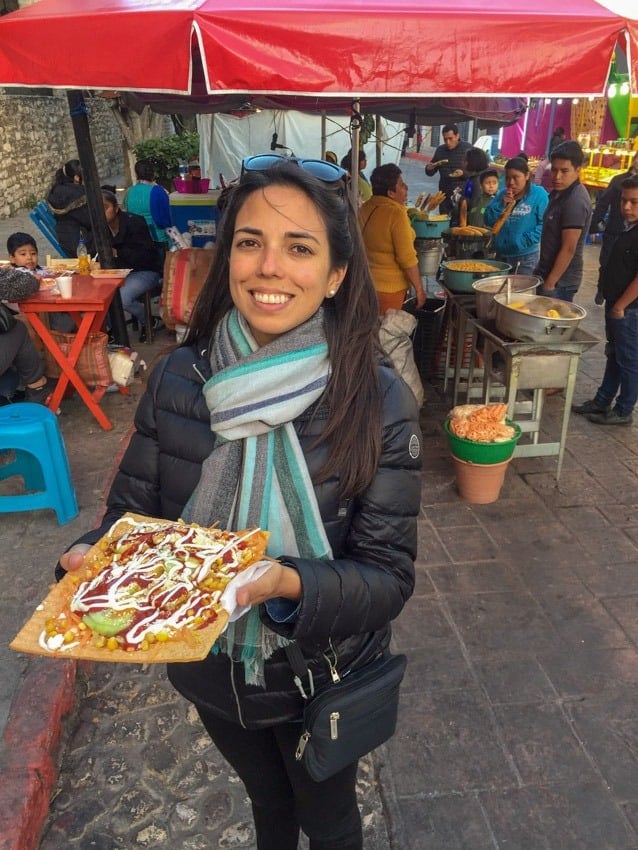
A Trick to Convert Mexican Prices to US dollar Prices
But what does that really mean? How can you start to understand prices when they are in another currency? And what do you do if you can’t Google a price right away?
That’s not too hard either. But you might have to recall some elementary school mathematics. Or pull out your calculator.
Before your trip, make sure you find out what the exchange rate is. I would find it in the terms of your local currency to the foreign one.
Like many currencies, the USD to MXN rate changes regularly. But for quite a few years, it consistently wavered between 18 to 21 MXN per USD. So for about $20 Mexican pesos, you could get $1 US dollar.
As of mid-2023, the Mexico peso is strong. That means you get fewer pesos for each dollar. Right now it is around $17 Mexican pesos per $1 USD.
Whatever the current rate is when you visit, drill the current exchange rate into your head. It’s the basis for every calculation.

If you use the ballpark figure of 20 Mexican pesos, you can get a rough USD estimate with two simple steps to convert prices in pesos to dollars.
- Find out the cost in pesos and cut it in half (divide by two.)
- Move the decimal place one place left (divide by 10).
I like this technique the most because it’s easy to do in your head. Dividing by 20 in one step is a bit complicated, but finding half then moving the decimal is just about as easy as calculating a tip, once you get used to it.
For example, let’s consider something that costs $200 pesos:
- Take 200 and dive by two, which gets you to 100.
- Then move the decimal to the left one spot and 100 becomes 10.
So $200 MXN is about $10 USD. Pretty cool huh?
It’s a similar calculation for Euros since the exchange rate is not too far off. If you are using another currency, try to figure out a simple calculation like this. The simpler, the better. It doesn’t have to be perfect, just something to use as a ballpark estimate.
But now that the peso is strong, the exchange rate is changing. It’s hard to come up with an easy solution to do in your head, especially because it might change after I write this.
Right now, the exchange rate is 17 MXN to USD. So how does that $200 MXN stack up to USD now? Instead of it being worth a clean $10 USD, $200 MXN is now closer to $12 USD. That means you’ll need to use more dollars to buy the same amount of pesos.
Can you calculate this in your head to get a precise figure? It’s not the easiest, but here’s how I calculate prices at a rate of 17 MXN to USD:
- Do the usual: cut the pesos price in half then move the decimal over one. (E.g., start with $200 pesos, divide to get $100 pesos, then move decimal to get $10 USD.)
- Then add about 20% to that price. (E.g., start with $10 USD, find that 20% is about $2, add the numbers to get $12 USD total.)
It’s a slightly more complicated way to calculate it, but that will still give you a nice ballpark figure for 17 MXN to USD.
Want to be more precise?
You can either pull up Google. Searching “$1000 MXN to USD” takes a moment.
Or, once you know the exchange rate, you can get a precise conversion with a calculator. One USD is worth 17 MXN. If you see a MXN price, divide by 17 to get the USD amount.

How to Tip in Mexico
Some places in the world don’t use tips as a way to compensate employees. Others rely on tips and still have incredibly low salaries. What’s the deal with Mexico?
In Mexico, tipping is customary and expected in a lot of cases. And while the proper amount for tipping depends a lot on your personal thoughts, a solid general rule is to tip around 10% or 15% for most services. That’s a good baseline for how to tip in Mexico.
At restaurants and bars, it is customary to tip at least 10%. If you are extremely satisfied with the service, bumping it up to 15% – 20% is normal too. Like many places, tipping is starting to creep higher and higher in the face of flat wage growth.
For tours and other tourist activities with service people in Mexico, tips are generally expected and appreciated. I’ve gone on some tours where the guide was hardly involved so we tipped a pretty small amount, and I’ve had great experiences where I almost paid double the cost of the ticket to the guide.
It is normal to tip in Mexico for hotel and spa services, including baggage handlers and to someone who reserves a lounge chair for you. Basically any service situation. The small bit can add up for them.
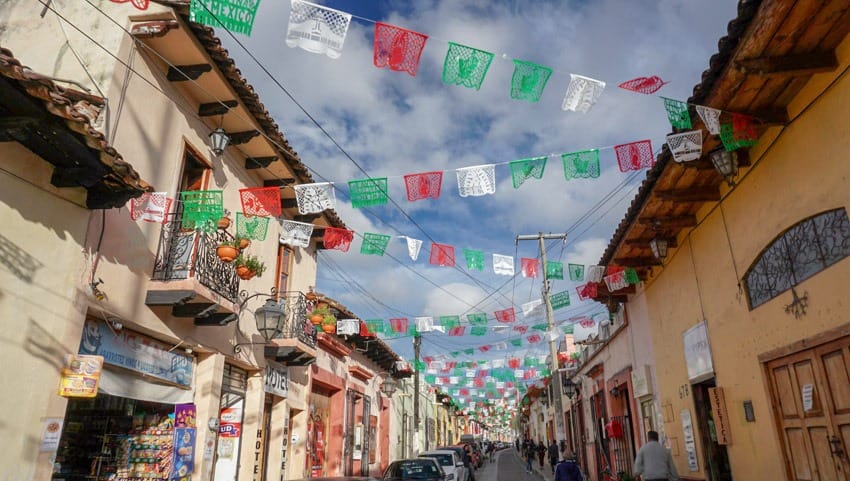
Gas station attendants are another place where a tip is customary in Mexico. Doesn’t have to be much, just enough to say thanks for your help.
Some people only tip if they wash your windshield or check your oil level. But to be frank, I find that rather cheap and unjustified. Many people do not agree that you only tip if they do additional work. They are service people and they are doing work for you, even if it’s just pumping fuel.
This person is pumping your gas and I can almost guarantee their wage is abysmal, likely less than $500 USD per month. Sending $5 to $10 pesos their way just for pumping you has likely won’t hurt you at all, but might help them. And if they actually do some additional work, I might bump that all the way up $20 pesos (about $1 USD), although that’s a pretty high tip at the gas station.
Some people tip at gas stations in accordance with the price of the fuel the pump, which seems fair too. This is usually somewhere in the 3% to 5% range.
One major exception to tipping is for taxi drivers. Confirm the price you are going to pay for the trip before you get in the car and you can pay that exact amount in Mexico. It is NOT customary to tip. If the driver helps with luggage or offers some other piece of helpful advice, then it’s normal to tip upwards of $5 to $10 pesos per bag. But for normal rides, don’t feel obligated.
Personal preference does come into play. But I urge you to be kind and compassionate when traveling, especially to places with significantly lower price levels. You don’t have to go wild, but giving generous tips to people who help you is warranted.
Did you know the minimum wage in most of Mexico is around $4-5 USD per DAY?
The couple bucks you throw to people who help you out probably doesn’t impact your budget much, but it might be a giant help to them. Many of the people who will be assisting you work on low wages and depend on tips to make a livable wage.
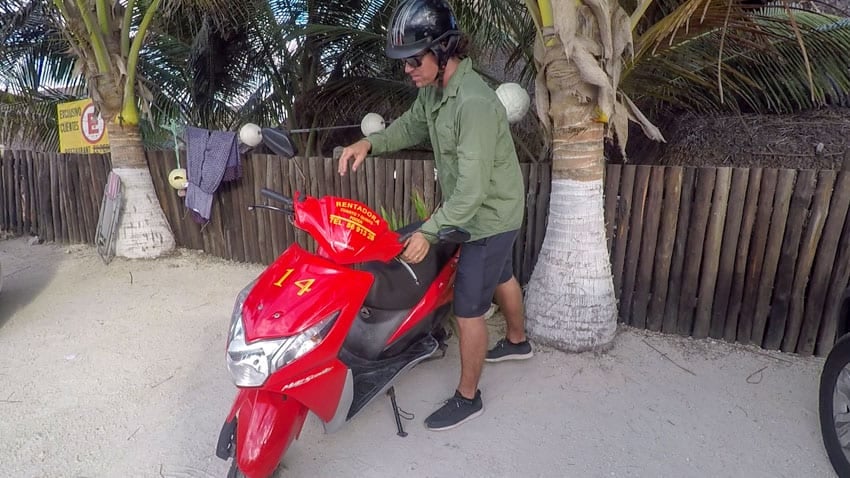
Tipping at All Inclusive Resorts
Tipping at all-inclusive resorts depends on the establishment. In some cases, resorts completely prohibit tipping. This is to make sure that every client is taken care of in the same manner. (Yes, sometimes the employees still accept them under the table.)
Yet many resorts do NOT prohibit tipping and you should be ready to do so. It is best to tip in the local currency because otherwise you force the worker to do the exchange service themselves. We’ll go over how to get local cash later in this post.
If you must tip in a foreign currency (like US dollars in Mexico), avoid using any coins as they are usually more difficult to exchange.
Generally, the tip should be similar to what you would tip if you had to pay for the drinks/meal. Of course this is tough to figure out without knowing how much the bill would be. But typically, something like $1 USD per drink ($20 MXN) and $5 USD per person per meal (at a nice restaurant where you get multiple rounds of food and drinks).
Once again, your own personal preference will come into play here, but those are some guidelines to work with. Be prepared to tip at all-inclusive resorts unless its prohibited.
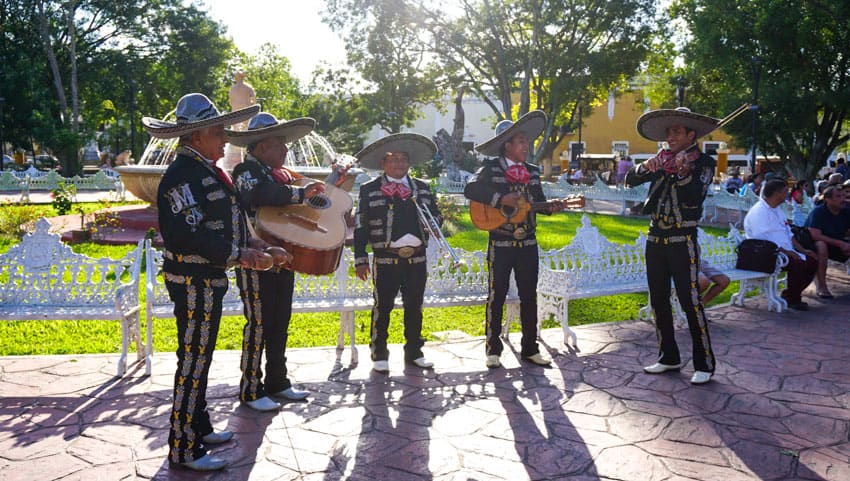
Mariachi Bands – Expensive for Good Reason
I can’t discuss tipping in Mexico without covering mariachi bands. Far too often, foreigners do not understand the culture behind mariachi bands and the role they play in Mexican society. They also don’t understand the cost.
Being in a mariachi band is an honorable profession. The band members (which can be as few as four or large groups with more than ten people) are often talented musicians who play an instrument at a professional level. Most band members are expected to sing as well.
They don’t just play whatever they want and beg for money. They are hired at events and in public spaces to play specific songs. So each band member knows hundreds of classic songs, ready to play whatever the party-goers decide.
Mariachi bands are used at all sorts of celebrations, from backyard birthday parties to extravagant balls. Restaurants allow them to come in to fill a place with energy and happiness, but the patrons hire them at their table and are expected to cover their cost.
And they are expensive.

Most mariachi bands charge on a per-song basis, which can be surprisingly expensive. Some might charge as low as $100 pesos, about $5 USD, per song. While others might go up as high as $400 pesos, about $20 – $25 USD, per song.
And that is before tips, which should be anywhere in the 10% – 20% range. Yes, you tip in addition to the cost of the song.
Costs vary dramatically, so it’s completely acceptable to ask how much per song first.
Sound overpriced for table-side entertainment? I think it’s good to think of it like this: If you hired a band to play at your event, how much do you think an evening would cost? It could be hundreds if not thousands of dollars, right?
The same thing here, but you just hire them for a song. Or two. Or three.
If you want to show off, just keep going. Paying for many songs can be seen as a generous way of providing entertainment for the restaurant, your table, or your date. It’s a way to impress. If you see a couple that looks like they’re on a date and the mariachi band never leaves their side, it might be that someone is trying to make sure they have a great time and is sparing no expense to make that happen.
It’s also very nice to others in the restaurant because they are paying for live music for everyone to enjoy. They get to pick the songs though.
Don’t like mariachi? Genuinely give it a shot. Think of the cultural importance and how you are being gifted with the presence of live music. Watch as the entire group works in harmony, with well-tuned instruments, and carefully pressed formal attire. Perhaps you’ll view it in a different light and get more enjoyment out of it.
If you want to get the full experience, learn some lyrics and sing along!
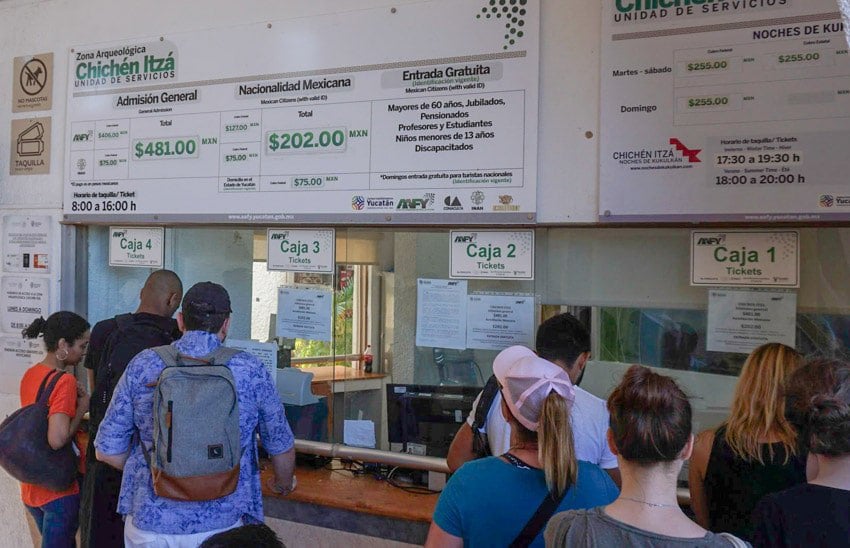
Using Credit Cards in Mexico
Credit cards are a major part of Mexican commerce, like most other places in the world. Most major restaurants and shops accept credit cards. And for most travelers, using a credit card should be your first choice of how to spend money in Mexico.
Why is that? Well, it’s the same everywhere.
Cash is risky – it can be lost or stolen and it doesn’t come with any rewards.
Debit cards are alright, but credit cards offer more protection against fraud. Plus, the best travel credit cards have other awesome perks for cardholders.
But you have to have the right card. What should you look for in a travel credit card?
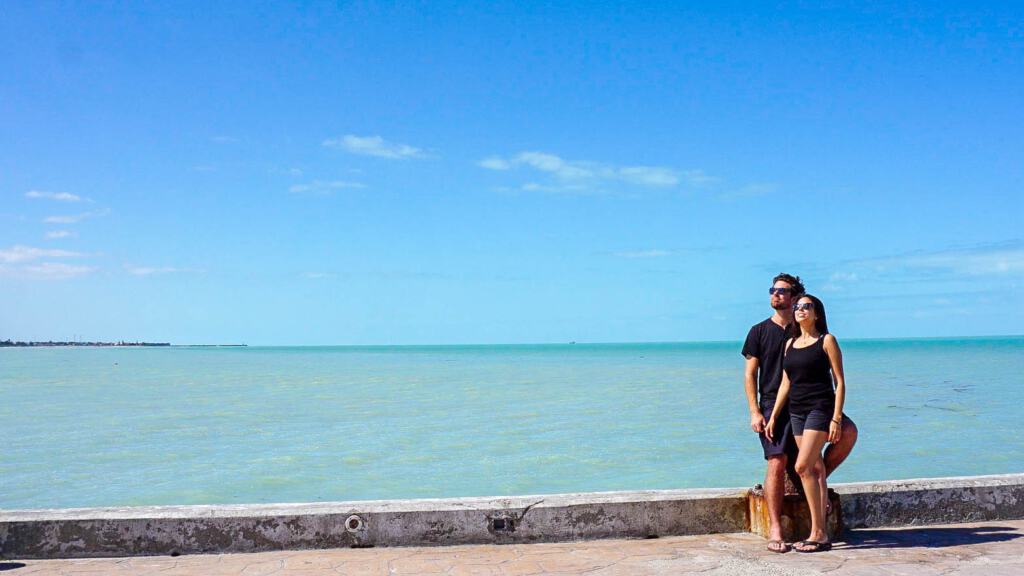
The most important aspect of any credit card you want to use while traveling to Mexico (or any foreign country) are foreign transaction fees. Some banks think they can get away with charging an additional 3% or another fixed amount on every international transaction. That’s ridiculous.
Get a credit card that doesn’t charge any foreign transaction fees (aka international transaction fees). Then, every time you swipe your credit card in a foreign country, your bank will do the conversion for free at the interbank exchange rate. You don’t even have to think about it.
Credit cards are also very useful for additional protection and insurance. With a lot of the best credit cards, you can waive any collision insurance on rental cars. They’ll reimburse expenses for lost luggage and emergency trip cancellations.
And most of all, if a fraudulent charge comes through, contact your credit card provider and they will take it off your statement and fight the charge on your behalf (or simply not allow the charge to go though). Debit cards, meanwhile, often leave you on the hook for the fraudulent charge until the investigation is complete.

In Mexico, it is customary for the credit card to never leave your sight. They bring a handheld scanner to your table or at the desk to swipe it in front of you. If someone takes your card and goes behind a closed door, that could be cause for concern. Sometimes they have no choice, but it is out of the ordinary.
If you want to add a tip (propina in Spanish) to the credit card bill, make sure to tell them before they swipe your card. They do not print off a receipt for you to add a tip to. They run the card once and get you to sign on the full amount. (As usual, most service providers prefer cash over credit card tips.)
Unfortunately, the reality is that credit card numbers are valuable and do get stolen from time to time. Mexico is not unique here. That’s why you should always review your financial statements and make sure there are no fraudulent charges.
But when you are in Mexico, bring a good travel credit card and be prepared to use it! Have a backup card as well in case of emergency.

Getting Cash at ATMs in Mexico
There are quite a few times when you will not be able to use your credit card. And sometimes places add an additional charge for credit cards that isn’t worth it.
In that case, be ready with a little bit of cash.
But how do you get cash while you’re in Mexico? Should you go to your local bank before your trip and get a giant wad of cash to travel with?
Absolutely not.
Instead, what most travelers do is to use ATMs upon arrival to the new destination. You can get your first bit of local currency at most airports. And ATMs are incredibly common all over Mexico, just like most other countries. And they almost always offer English as a language on the machines. And even if they don’t, a little common sense goes a long way.
How should you use the ATMs in Mexico? Get out enough to cover expenses for a couple days or so, but don’t go overboard. Your cash should be an emergency backup and not your primary method of spending. Traveling anywhere with large amounts of cash is downright foolish.

The trick is to get a debit card and checking account from a bank which allows you to avoid ATM fees. This means two things: (1) your bank doesn’t charge to use other banks’ ATMs (third-party ATMs) and (2) your bank reimburses any fee that the third-party ATM charges.
Not all banks offer this type of service and they might have some requirements to get an account like that. Charles Schwab is known to offer a checking account with free ATM use anywhere in the world, but you might have to fund an investment account to get this account.
One other tip for using ATMs in Mexico, which applies to other countries as well: Use ATMs at secure locations, such as the ones at banks, instead of standalone ATMs.
Seems convenient to use the ATMs at the gas stations and Oxxos all over the place, right? Well, they have the highest rates of skimming.
Instead, look for ATMs at bank branches. Ones that are inside and under security supervision are the best.
Visit ATMs during the day, be careful not to flaunt your wad of cash and move on with your day.
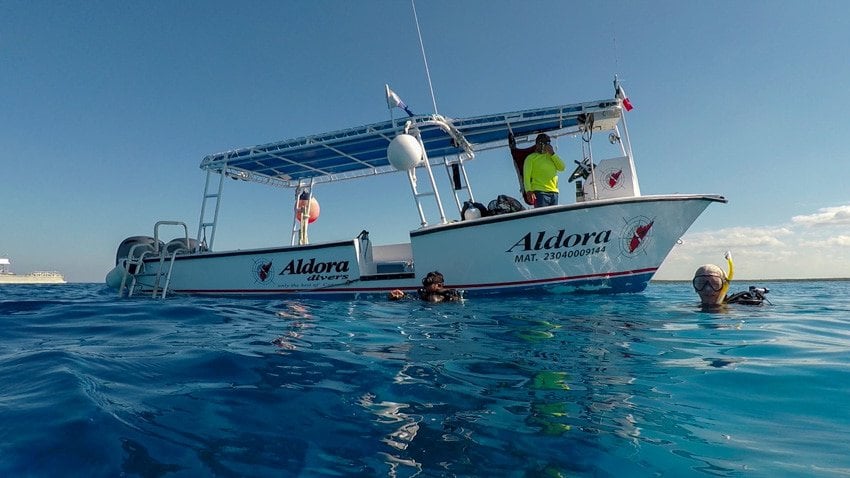
Using Large Bills in Mexico
Quite a few of the places which do not accept credit cards might also have trouble giving you change for large bills.
Sometimes they simply don’t have it, but other times they don’t want to give away their small bills or change.
I’ll be honest, it’s a bit of a game. No one wants to have to go to the bank to get smaller bills. If you pull out a large bill for a small purchase, you will almost always be asked for something smaller. This is incredibly common and can be quite frustrating as a traveler with limited access to change.
But I have figured out a way around it.
If you pull out the large bill, then ASK first if they have change (tiene cambio? in Spanish), they will be much more open to giving you change. It shows them you understand that change may not be available. And if they really want the sale, they’ll be more likely to provide change.
Keeping some coins in your pocket can come in handy in many situations in Mexico, especially to use the bathroom.
A lot of places charge small fees (around 5 pesos or $0.25 USD) to use the restroom. It’s wise to carry a bit of toilet paper with you as well as even if they do hand it out, it’s usually a very small amount.

Verify Your Change
Another unfortunately reality of traveling in many countries is that a lot of “mistakes” can happen when giving you change back. It’s just part of being a tourist and I’ve personally had it happen in many countries, including Mexico. Since I’m a stickler for financial calculations, I usually notice it and correct it. But it’s easy to overlook and in many cases it’s not a big deal so it’s not worth losing sleep over.
Don’t be afraid to take your time to verify that you received the correct change. Sometimes people mess up. And yeah, sometimes it might be an intentional act to keep more money.
Do yourself a favor and verify your change as soon as you receive it.
If it is incorrect, simply say so and don’t get worked up about it.
To say so in Spanish, say “está mal” which means “it is wrong.” I wouldn’t expect an apology. But I do always expect to get the right change after noticing an issue. Be calm, but also be firm. I’m a generous tipper, but no one should be maliciously taken advantage of.

Why Are USD Prices on the Menus?
Some of the most touristy areas in Mexico offer to accept US dollar instead of pesos. The truth is that they are providing convenience and they usually charge for that service.
Most places which accept foreign currency use that as a means to generate additional profit. It is almost always better to pay in local currency.
If you must use the currency you brought from home, at least make sure you understand their conversion rate. Get a menu that has USD and MXN prices, then divide the MXN amount by the USD amount.
For example, if something is $60 pesos or $5 USD, which is cheaper? 60 divided by 5 is around 12, which means they’re giving you 12 pesos for every USD. The actual exchange rate is likely higher, so 12 is an exchange rate you don’t want. Pay in pesos.
You can also go to Google. “5 USD to MXN” will get you the amount of pesos it should cost. If the price on the menu in pesos is lower, then pay that instead!
Don’t give away your money for convenience, especially when it can be upwards of 40%. Not all menus in foreign currencies have this problem, but many do.

Negotiating and Haggling in Mexico
Negotiating over prices is customary for a lot of transactions in Mexico. For most purchases of souvenirs, tours, and other tourist-focused activities, the price they provide is a starting point for negotiations. That doesn’t mean you must always haggle and it doesn’t mean that every vendor is open to it. Sometimes they won’t budge or you’ll find the price seems fair and just pay it.
It is not common, however, to negotiate when buying food or drinks. And you cannot negotiate with cashiers at major retailers, such as large grocery stores.
At small markets, some people expect to haggle on just about everything. And sometimes they’ll simply overcharge you based on their judgement of you. It’s not exactly fun to be seen as a walking ATM, but once again, keep in mind the incredibly low wages for many people and it might help you understand why it happens.
How do you go about negotiating in Mexico?
Start by asking them the price. It might be laughably high or it could be quite reasonable. As a foreigner, it can be hard to know.

After you get them to provide a price, let them negotiate against themselves. “Is that your best price?” is usually my go-to sentence. And a lot of times they will immediately reduce the price.
You can then give them your own offer, perhaps just a bit under what you really expect to pay. If you are buying for multiple people or a large quantity, ask for a discount.
Then, hopefully after a round or two of going back and forth, you will land in the middle. It shouldn’t be a battle nor condescending. Just a conversation to find a price that works for both parties.
If you don’t haggle in Mexico, you might overpay. But try not to get too overwhelmed or concerned about it. That bit of extra money might not make a small difference to you, but perhaps it is a major help to them.
At the same time, no one likes to be taken advantage of. If you know you are getting fleeced and they are being stubborn with their negotiations, walk away.
My biggest piece of advice: Remember that this is customary. Do not be rude or get angry during your negotiations. Be honest, be firm, and be prepared to walk away.

Final Thoughts on Using Money in Mexico
And now you have what you need to use money in Mexico. By using Google and doing simple math, exchange rates and prices are no longer a mystery. You know it is customary to tip at least 10% for most services. And that you should use a good travel credit card wherever you go.
Get local cash out of the local ATMs, and don’t take too much. Check your change. And finally, you know how to haggle and get a good price.
Armed with this information, you are now ready to use money in Mexico!
Want to know more about how to travel in Mexico? Check out these posts with some of our best tips!
- ADO Bus System
- Guide to Mexican Beverages
- Tips for Visiting Mayan Ruins in Mexico
- Being Vegetarian and Vegan in Mexico
- Buying Car Insurance for Baja Mexico
Do you have any other travel tips for using money while in another country? Leave a comment below to share your thoughts!
Like This Post? Pin It!

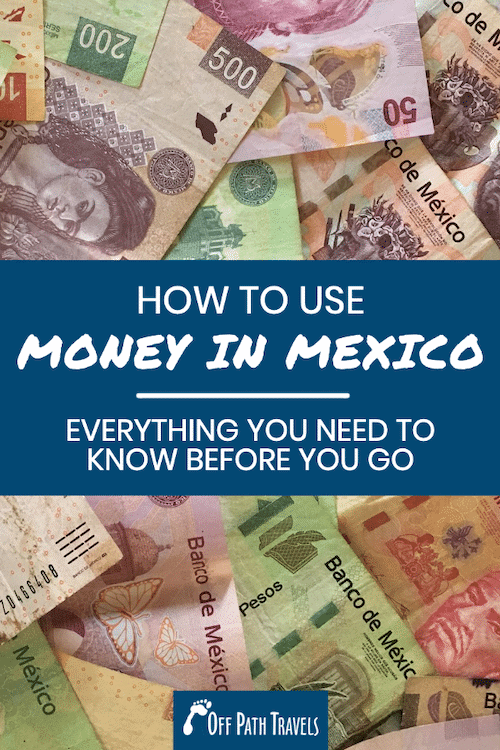

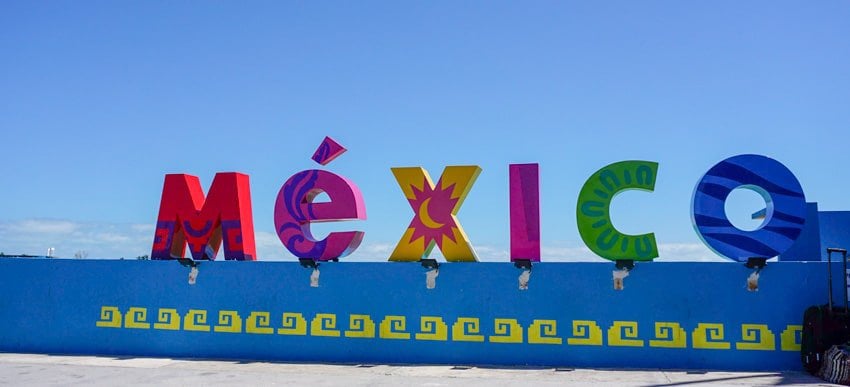
such a nice blog, i love mexico, i ate mostly street food and tacos for less then 1€, also for finding atms i use this app called “ATM Fee saver” i have to say its super good. It shows atm around you with the lowest fees for withdrawing money. i used it the entire 3 month and i saved a lot of money 🙂 can recommend it
Thanks for the kind words and the traveling tip, Charlie! Always good to avoid any bank fees you can.
We’re in Oaxaca right now and it’s almost hard to believe how great the food is, especially at the insanely low prices.
I love to travel to Mexico. Last year, we were in Guanajuato. I kept most of my meals under $5. I like to travel on a budget. And tips do go far. On the way to the airport my taxi driver pointed out a Ford dealer. He said it was by far the best paying job. Employees work a lot of overtime. Their weekly pay is about $83! Crazy, huh?
It’s19 pesos to the dollar. Just call it 20 to make it easy. Makes 1 peso = 5 cents or 20 pesos to the dollar. 200 pesos $10. It’s simple math. A baby could figure it out
You’re making the conversion harder than it is. Just divide the peso amount by the current exchange rate. Example: The cost of this item is 1500 pesos. Current exchange rate is 19 pesos to the dollar. 1500 divided by 19 equals $78.94. So $79. Or do the opposite. 10 dollars times 19 pesos equals 190 pesos.
Hey there! Thanks for reading the article. I agree that your method is great if (1) you know the current exchange rate and (2) you want to use a calculator every time. In this article, I’m giving people ways to first find the exchange rate (since I’ve encountered many who aren’t aware), then to use simple mental tricks to find the relative price. For me, it’s much easier to remember those and be able to look at any price with reasonable confidence (especially when dealing with multiple purchases, such as grocery shopping), rather than pull out a calculator all the time. But as always, everyone should use what’s best for themselves! Safe travels!